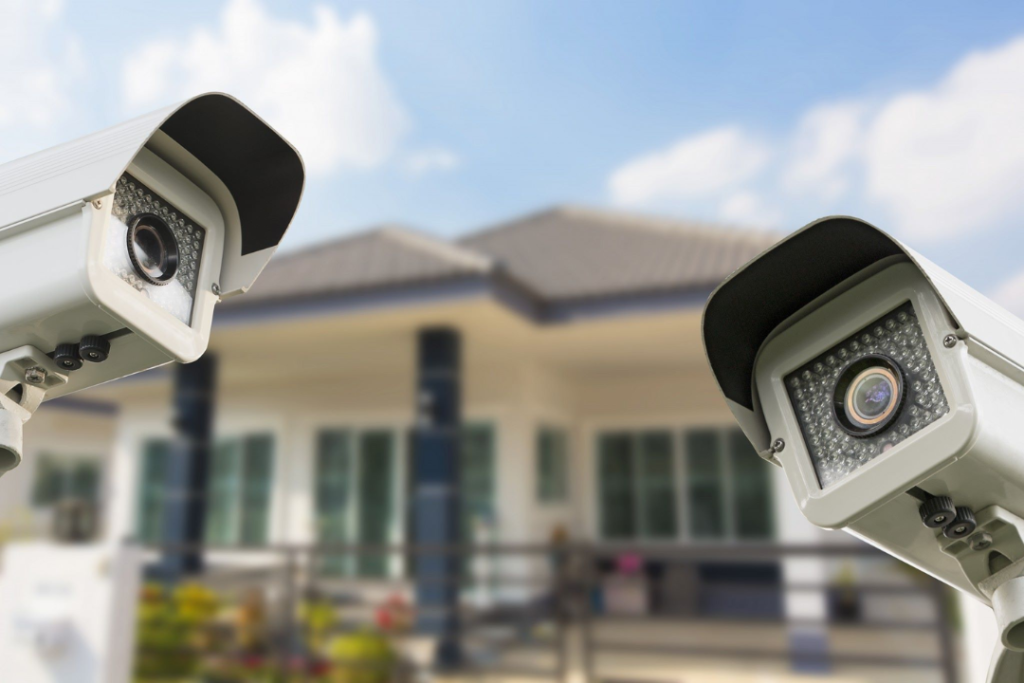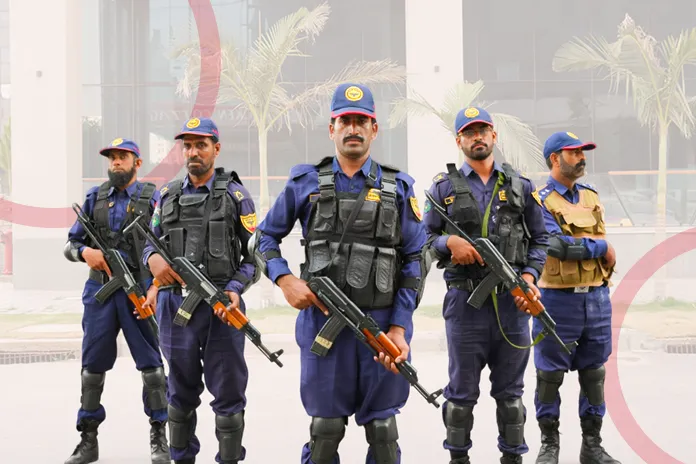Why Your Residential Security in Pakistan Might Be Failing (Expert Guide 2025)
Your residential security in Pakistan might be failing despite your best efforts. In today’s world, ensuring the safety of your home and loved ones is more important than ever, yet many security systems across Pakistan suffer from critical weaknesses that homeowners often overlook.
From Karachi’s busy neighborhoods to Islamabad’s suburban areas, smart security cameras have become essential for home protection. Unfortunately, as phones and internet connectivity develop at a rapid pace in Pakistan, the need for smart automation is spreading, but security gaps remain. Whether you’ve hired pakistan security guards or invested in technical solutions, these systems often fall short without proper implementation. Moreover, security pakistan concerns extend beyond simple camera installation, requiring comprehensive approaches that many homeowners miss.
This expert guide examines why your home security might be vulnerable, from unmonitored blind spots to outdated equipment. We’ll also explore how pakistan security services can help address these issues, providing professional recommendations to transform your failing system into a robust defense for your property and family.
Common Signs Your Home Security Is Failing
Recognizing the warning signs of a failing security system is crucial before it’s too late. When left unchecked, these issues create serious vulnerabilities that intruders can easily exploit. Let’s examine the telltale indicators that your residential security in Pakistan requires immediate attention.
Unmonitored blind spots around the house
Security camera blind spots are vulnerable areas where threats can go completely undetected. These gaps in coverage drastically decrease your system’s effectiveness, providing shelter for criminals to hide from your cameras’ view. Studies show that most homeowners overlook critical areas when setting up surveillance systems, specifically employee-only zones, back entrances, parking areas, and loading docks. These blind spots often result from camera limitations, structural obstructions, or poor planning during installation. To identify these vulnerabilities, conduct trial runs with a family member posing as an intruder while you monitor your camera feeds.
Delayed or missing motion alerts
If your motion detection doesn’t trigger alarms or notifications arrive too late, your system isn’t providing timely protection. Generally, alarm messages experience a 5-30 second delay depending on network quality. However, if you’re consistently missing alerts or experiencing longer delays, this indicates a significant problem. Common causes include disabled motion detection settings, insufficient WiFi signal strength (should be above 75%), notification permission issues on your phone, or improperly placed cameras. Consequently, these delays create dangerous gaps in security response time.
Frequent power or connectivity issues
In Pakistan’s environment of regular load shedding, power interruptions severely compromise security systems. When your camera network frequently goes offline, it creates serious vulnerabilities for your property. Network overloads from too many connected devices, weak WiFi signals, and internet service interruptions all contribute to connectivity problems. Furthermore, bandwidth limitations or competition from multiple streaming devices can affect camera functionality. A stable system should maintain a connection through power fluctuations.
Outdated or non-functional cameras
If your cameras produce blurry, distorted images, it’s time for an upgrade. Aging lenses, low-quality equipment, or environmental damage can cause poor image quality that fails to capture crucial details. Specifically, analog cameras or those providing only 720p resolution struggle with blurry footage that makes identifying intruders difficult. In addition, cameras that no longer receive software or firmware updates indicate manufacturer support has ended, making them vulnerable to technical issues and security flaws. For this reason, regular professional assessment from pakistan security services can identify these problems before they compromise your safety.
Key Technical Gaps in Residential Security Systems
Technical shortcomings often undermine even the most expensive residential security systems in Pakistan. Beyond basic issues like camera placement, these fundamental gaps can render your entire setup ineffective against determined intruders.
Lack of weatherproof outdoor cameras
Outdoor cameras without proper weather protection fail when you need them most. Unfortunately, many homeowners install standard cameras that deteriorate rapidly in Pakistan’s diverse climate conditions. For maximum protection, look for cameras with an IP65 rating or higher, which ensures complete dust protection and strong resistance against water exposure. Devices with lower ratings may work initially but suffer from fogging, water spots, and image degradation after exposure to rain or extreme temperatures. Quality weatherproof cameras should feature housings made from durable materials like aluminum or high-grade weather-resistant plastics that resist environmental damage.
No backup power during load shedding
Load shedding remains a critical vulnerability for residential security pakistan systems. When power cuts occur, alarm systems typically shut down automatically once battery voltage drops between 10.2 and 10.7 volts. This creates perfect opportunities for break-ins, as criminals often capitalize on these predictable security gaps. Even worse, when power returns, faulty alarm batteries frequently trigger false alarms, overwhelming security pakistan response teams. Consider upgrading to 8-amp gel batteries with higher capacity or investing in solar backup solutions specifically designed for security systems.
Low-resolution or narrow field-of-view cameras
Standard definition cameras lack the detail needed to identify intruders clearly, making footage nearly useless as evidence. Equally problematic, cameras with limited fields of view create critical blind spots where incidents go completely unrecorded. A comprehensive system needs high-definition cameras (minimum 1080p) positioned strategically to eliminate coverage gaps. Remember that narrow-angle cameras might miss significant activity happening just outside their viewable area.
No integration with mobile apps or smart assistants
Standalone security systems without smart integration offer limited protection in today’s connected world. Modern systems should allow remote monitoring via mobile apps, enabling you to receive real-time alerts and view footage instantly. Yet many pakistan security services still install outdated systems lacking cloud storage options or smartphone connectivity. For optimal protection, look for cameras that offer both SD card and cloud storage redundancy, ensuring your footage remains accessible even if devices are damaged or stolen.
Behavioral and Planning Mistakes Homeowners Make
Beyond technical failures, poor security habits create vulnerabilities throughout Pakistani homes. Unfortunately, these behavioral patterns often go unnoticed until after a break-in occurs.
Relying only on indoor cameras
Many homeowners make the critical mistake of installing cameras exclusively inside their homes. Indoor-only approaches create significant privacy concerns, especially regarding data storage and potential breaches. Furthermore, without exterior surveillance, intruders can scout your property undetected, finding vulnerable access points before entering.
Ignoring entry points like garages or rooftops
Surprisingly, approximately 9% of burglars enter homes through unsecured garages. Likewise, upper floors present another frequently overlooked vulnerability, with intruders using nearby trees, trellises, or even conveniently placed ladders to access second-floor windows. Experienced burglars particularly target attached garage service doors, which are typically standard interior doors not built to withstand forced entry.
Not informing or training family members
Family safety requires educating all household members about proper security practices. Children should receive instruction on operating the system, including password protection protocols and emergency procedures. Regular family meetings to review and practice emergency plans empower each family member with knowledge to act safely if needed.
No signage or deterrents for intruders
Visible security warnings strategically placed at key entry points effectively communicate the presence of protection measures. These visual deterrents significantly discourage individuals with malicious intent from attempting unauthorized access.
Expert Recommendations to Fix Your Security Setup
Fixing failing security requires strategic upgrades rather than piecemeal improvements. Based on expert analysis, these recommendations will transform your residential security in Pakistan from vulnerable to virtually impenetrable.
Use a hybrid system: indoor + outdoor cameras
Hybrid security systems combine the best features of both analog and IP cameras, offering flexibility without replacing everything at once. This approach allows you to keep existing cameras while strategically adding high-definition IP models in critical areas. Hence, you gain comprehensive coverage without unnecessary expenses. The system continues recording locally if your internet connection fails, yet uploads footage to cloud storage once connectivity returns.

Choose IP65+ rated cameras for outdoor use
Outdoor cameras must withstand Pakistan’s diverse weather conditions. Opt for models with IP65 or higher ratings, ensuring complete dust protection and strong water resistance. Quality weatherproof cameras can operate reliably in temperatures ranging from -20°C to 50°C, ideal for both summer heat and winter conditions.
Install motion-triggered lighting and alerts
Motion sensor lights react to movement within their detection range, creating a powerful deterrent against intruders. When paired with security cameras, this combination provides dual protection—the sudden illumination startles potential criminals while cameras capture evidence. Furthermore, alarm-triggered lighting helps guide family members to safety during emergencies.
Ensure cloud + SD card storage redundancy
Implement both local SD card and cloud storage for crucial redundancy. Although cloud services generally cost between PKR 4165 to PKR 8330 annually, they protect your footage from theft, fire, or natural disasters. SD cards offer higher video quality without compression often applied to cloud uploads.
Consult certified Pakistan security services for setup
Professional installation ensures optimal camera placement, eliminating blind spots that might otherwise compromise your security. Experts can integrate motion detection, lighting, and alerts into a cohesive system tailored to your property’s specific vulnerabilities.
Conclusion
Residential security failures across Pakistan often stem from a combination of technical shortcomings and human error. Your current system might appear adequate until you consider the critical gaps – unmonitored blind spots, delayed alerts, and outdated equipment that leave your home vulnerable. Additionally, behavioral patterns like focusing solely on indoor surveillance or neglecting unconventional entry points create perfect opportunities for intruders.
Therefore, effective home security requires a multi-layered approach rather than isolated solutions. Weatherproof outdoor cameras with proper IP65+ ratings, backup power systems, and high-resolution devices form the foundation of reliable protection. Nevertheless, even the best equipment falls short without proper installation and family participation in security protocols.
Consider your security system as an ecosystem that needs regular evaluation and updates. Most importantly, consulting with certified Pakistan security professionals helps identify vulnerabilities unique to your property before they become problems. Though implementing comprehensive security measures requires initial investment, the protection they provide for your family and possessions ultimately proves invaluable.
Smart security integration, motion-triggered lighting, and redundant storage solutions significantly enhance your home’s defense capabilities. However, technology alone cannot guarantee complete protection. Your active participation in maintaining and understanding your security system remains equally crucial. By addressing both technical and behavioral security gaps now, you transform your vulnerable property into a well-protected sanctuary for years to come.



